#Airlines Market Challenges
Text
Airlines Market May Set New Growth Story

Global Airlines Market Report from AMA Research highlights deep analysis on market characteristics, sizing, estimates and growth by segmentation, regional breakdowns & country along with competitive landscape, player’s market shares, and strategies that are key in the market. The exploration provides a 360° view and insights, highlighting major outcomes of the industry. These insights help the business decision-makers to formulate better business plans and make informed decisions to improved profitability. In addition, the study helps venture or private players in understanding the companies in more detail to make better informed decisions. Some are the key & emerging players that are part of coverage and have being profiled are American Airlines Group (United States), Air France KLM (France), ANA Holdings (Japan), British Airways (United Kingdom), Delta Air Lines (United States), Deutsche Lufthansa (Germany), Hainan Airlines (China), Japan Airlines (Japan), LATAM Airlines Group (Chile), Qantas Airways (Australia).
Get Free Exclusive PDF Sample Copy of This Research @ https://www.advancemarketanalytics.com/sample-report/63600-global-airlines-market
Airlines are the companies which provides air transport services for traveling passengers and freight. These companies uses aircraft to supply these services and may form partnerships with other airlines for codeshare agreements. Airlines vary in size from small domestic airlines to full-service international airlines with double decker airlines.
The titled segments and sub-section of the market are illuminated below: by Services (Intercontinental, Domestic, Regional, International), End-User (Passenger, Freight)
Market Trends:
Demand for Eco-Friendly and Fuel Efficient Aircraft from Airline Companies
Opportunities:
Growing Tourism Industry Worldwide
Increasing Number of International Airports Worldwid
Market Drivers:
Increase in Number of Air Passengers Worldwide
Increased Disposable Income of the People in Emerging Countries
Advertisement of Tourist Places by Tourism Industries
Global Airlines market report highlights information regarding the current and future industry trends, growth patterns, as well as it offers business strategies to help the stakeholders in making sound decisions that may help to ensure the profit trajectory over the forecast years.
Region Included are: North America, Europe, Asia Pacific, Oceania, South America, Middle East & AfricaCountry Level Break-Up: United States, Canada, Mexico, Brazil, Argentina, Colombia, Chile, South Africa, Nigeria, Tunisia, Morocco, Germany, United Kingdom (UK), the Netherlands, Spain, Italy, Belgium, Austria, Turkey, Russia, France, Poland, Israel, United Arab Emirates, Qatar, Saudi Arabia, China, Japan, Taiwan, South Korea, Singapore, India, Australia and New Zealand etc.
Have Any Questions Regarding Global Airlines Market Report, Ask Our Experts@ https://www.advancemarketanalytics.com/enquiry-before-buy/63600-global-airlines-market
Points Covered in Table of Content of Global Airlines Market:
Chapter 01 – Airlines Executive Summary
Chapter 02 – Market Overview
Chapter 03 – Key Success Factors
Chapter 04 – Global Airlines Market - Pricing Analysis
Chapter 05 – Global Airlines Market Background
Chapter 06 -- Global Airlines Market Segmentation
Chapter 07 – Key and Emerging Countries Analysis in Global Airlines Market
Chapter 08 – Global Airlines Market Structure Analysis
Chapter 09 – Global Airlines Market Competitive Analysis
Chapter 10 – Assumptions and Acronyms Chapter 11 – Research Methodology
Read Detailed Index of full Research Study at @https://www.advancemarketanalytics.com/reports/63600-global-airlines-market
Thanks for reading this article; you can also get individual chapter wise section or region wise report version like North America, Middle East, Africa, Europe or LATAM, Southeast Asia.
Contact US :
Craig Francis (PR & Marketing Manager)
AMA Research & Media LLP
Unit No. 429, Parsonage Road Edison, NJ
New Jersey USA – 08837
Phone: +1 201 565 3262, +44 161 818 8166
[email protected]
#Global Airlines Market#Airlines Market Demand#Airlines Market Trends#Airlines Market Analysis#Airlines Market Growth#Airlines Market Share#Airlines Market Forecast#Airlines Market Challenges
0 notes
Text
When Airbus was developing the successor of the highly successful A300 twin-engine wide body airliner, their entry into the commercial aircraft market.
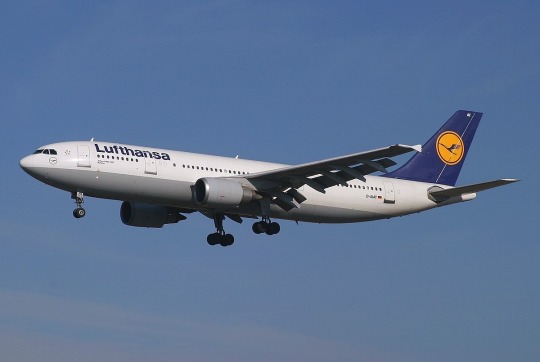
They faced the issue of ETOPS restrictions, basically a series of rules that limited aircraft range based on number of engines, and since they wanted to both replace the A300 and compete with the 747 and DC-10/MD-11, they basically developed a single airframe and wing for two planes
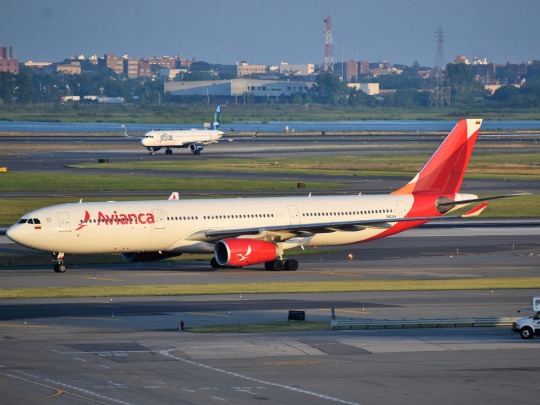
The A330, the direct successor to the A300
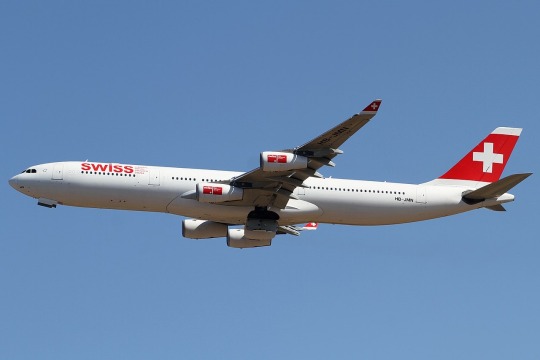
And the A340, the new challenger in the pacific and long-range flights.
The funny thing is, the A340 didn’t get 4 of the A330 engines, instead, as you can see, it got smaller engines, actually from the narrow body A320.
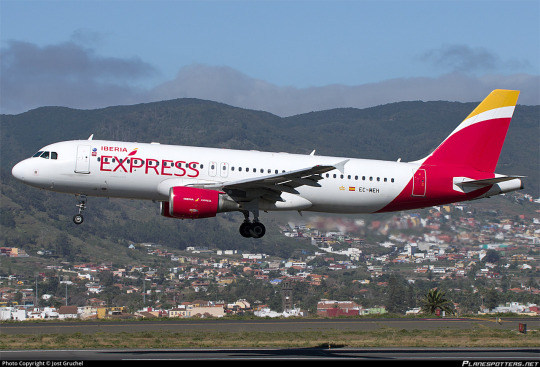
In effect just giving a tad more power and range compared to the A330, but giving us what has to be the most underpowered wide body airliner ever made, infamous for it’s long take-off runs and atrocious climb rates.

Hence why Airbus came back to its senses and actually gave it proper wide-body engines, finally creating a proper contender to the 747.

Sadly, with the end of the ETOPS restrictions and the rise of ultra-long range twin jets, the days of the A340 were counted, its production run ending in 2010.

Something that actually helped her smaller twin sister A330, which has found new life in the current wide body market thanks to newer, better engines, in a way, learning from the lessons of the A340.
67 notes
·
View notes
Text
A federal judge Tuesday blocked JetBlue Airways’ purchase of Spirit Airlines after the Justice Department sued to stop the merger, saying the deal would drive up fares for price-sensitive consumers by taking the discount carrier out of the market.
JetBlue’s proposed $3.8 billion purchase of discounter Spirit would have produced the country’s fifth-largest airline, a deal the carriers had said would help them better grow and compete against larger rivals like Delta and United.
“JetBlue plans to convert Spirit’s planes to the JetBlue layout and charge JetBlue’s higher average fares to its customers,” U.S. District Court Judge William Young wrote in his decision. “The elimination of Spirit would harm cost-conscious travelers who rely on Spirit’s low fares.”
The decision, handed down Tuesday, marks a victory for a Justice Department that has aggressively sought to block deals it views as anti-competitive.
“Today’s ruling is a victory for tens of millions of travelers who would have faced higher fares and fewer choices had the proposed merger between JetBlue and Spirit been allowed to move forward,” Attorney General Merrick Garland said in a statement. “The Justice Department will continue to vigorously enforce the nation’s antitrust laws to protect American consumers.”
8 notes
·
View notes
Text
No. 30 - LATAM Airlines
I wasn't entirely forthright last time. About the correct response to my questionnaire, I mean. I didn't lie. I just left out the second half.

Yes. It was a trick question. Brazil has four carriers that have, at one point or another, had solid claim to the title of flag carrier. And right now, the airline which represents them on the long-haul scale, their link to the world, their 'flag carrier'...is LATAM Airlines.

Why doesn't LATAM count? Well, because LATAM is...something quite unusual, a conglomeration of different features which appear in isolation but have yet to rear their head together, creating an admixture which I fear casts a shadow over much, if not all, of Latin America.
LATAM's story doesn't start in Brazil. It starts in Chile. But it doesn't stay there.
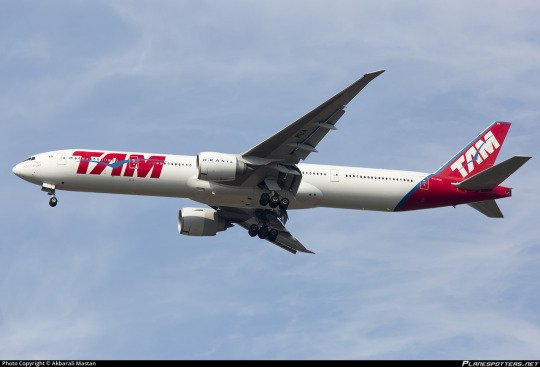
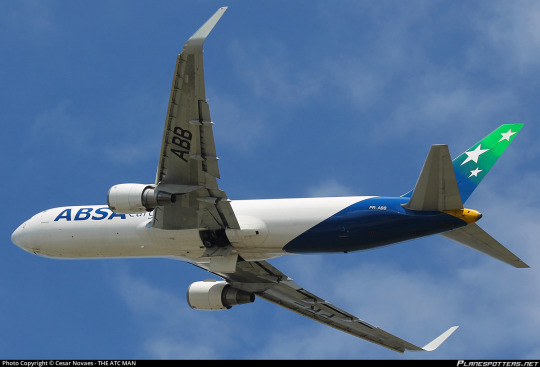

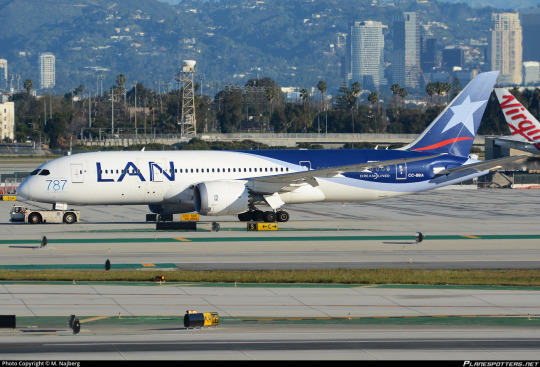
What do all these airlines have in common?

Their planes look like this now.

LAN-Chile was privatized in the 1990s. Until then, it had been the country's flag carrier. Now it was on the hunt to become something more. It was one thing to be the largest carrier in Chile, but there's more than just Chile out there. International carriers know this well, since they go outside of Chile.

Around the same time as LAN-Chile was privatized, LAN Perú was created as an independent company. It was a rough time for Peruvian aviation. Its flag carrier, Aeroperú, had just gone under, and its other major airline, Faucett, had lead the way for it two years earlier. They needed a new national airline, and LAN was there, identical in branding to the Chilean carrier of the same name. Unsurprisingly, it was officially made a subsidiary of LAN in 2002. Even the livery was changed.
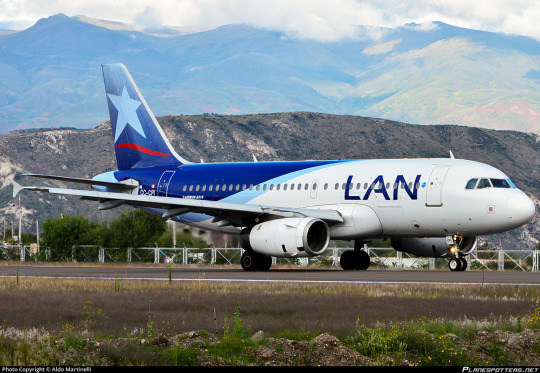
Over 70% of the market share was now held by what was essentially a Chilean airline, without even the name of the country it served written on its livery.
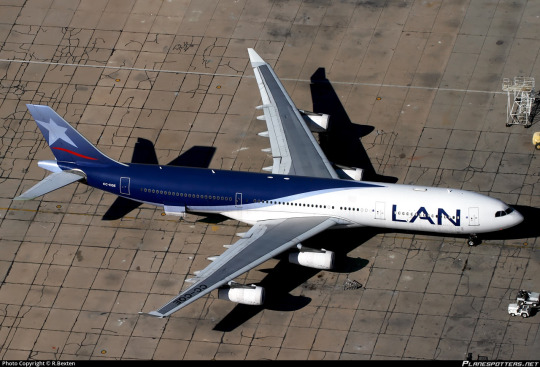
Also in 2002, LAN created another subsidiary - LAN Ecuador. It obviously looked the exact same as the other two LANs, so I have simply added another picture of a LAN Chile airplane. There is no reason I should care enough not to.
The LAN livery? Well, it's fine. I like the size of the wordmark and the way they committed to having half the fuselage covered, as should be the minimum, though other airlines do this exact shape far better; the layered light and dark blues are nice.
C. For Chile. Or maybe Peru. Or whatever else.
Another subsidiary was created, LAN Dominicana. Argentine airline Aero 2000 was acquired and became LAN Argentina. Both are now defunct.

Colombia's second-largest airline, AIRES, also fell prey to the LAN infection which had now firmly planted its roots and its routes across the continent.
I actually more or less like the AIRES livery, which makes me sad. It's got a real sense of forward motion with those swooping lines and the high placement of the forward-leaning letters. It's...nothing special, but it's good enough.
It's at least worth a C+. I wish it still existed.
It could have been worse - Avianca, Colombia's flag carrier, held on, and is still in operation - one of the only challenges to LAN and what is now LATAM in South America. I'm sure they would have liked to have Avianca, and Panamanian flag carrier Copa, too, but even Copa draws the line here. But Copa and Avianca were small fry. There was only one carrier standing between them and utter domination - the largest airline in all of Latin America.
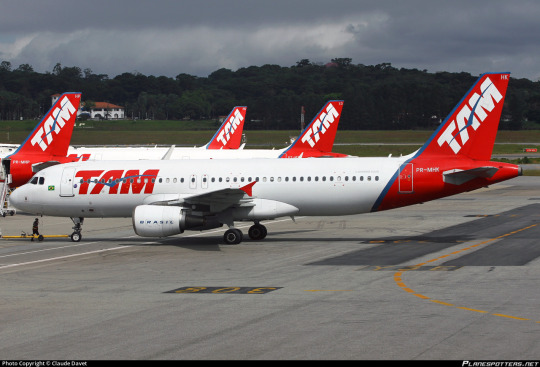
In 2011, TAM and LAN finalized a binding agreement to merge. The two companies fused into one, by far the largest holding company in Latin America, though much like the many LANs it continued to operate as separate companies. TAM still wore its own livery, but time was catching up to it.
TAM isn't a hero here. Well, nobody is, these are giant corporations that paint different things on their airlines, but my point is that TAM had done nearly the exact same thing.

LAP (Líneas Aéreas Paraguayas) was the flag carrier of Paraguay, until it wasn't. In 1994 it was privatized and sold to an Ecuadorian-Paraguayan consortium which also owned now-defunct Ecuatorean airline SAETA. (Their livery was boring.)

It began operations again as LAPSA Air Paraguay. Much the reverse of the LANs, this was SAETA operating under Paraguayan branding. But this only lasted until 1996, when TAM's Paraguayan subsidiary ARPA (Aerolíneas Paraguayas) acquired it and it was merged into TAM, with...you guessed it...the same livery. (Their livery was boring, though I always appreciate a nice bisected wordmark.)

This is TAM's livery from 2005 to 2008. What was now TAM Paraguay of course shared it.
This is the point where we stop and ask: why do I care? Doesn't this happen everywhere, all the time? Didn't like, thirty legacy carriers eventually merge into five in the US? Well, none of those were really a flag carrier, as much as certain brands like TWA were massive it just doesn't feel like it's quite the same. Not to mention that, unlike LATAM, which operates separate airlines in identical branding, when Delta absorbed Northwest or United swallowed Continental the entirety of their operations were merged into one company. It was what I'd call a 'true' operational merger rather than just occurring at the corporate level, like LATAM.
But aren't a lot of flag carriers owned by some combination of the same holding companies? The best-known example: doesn't Air France own KLM?
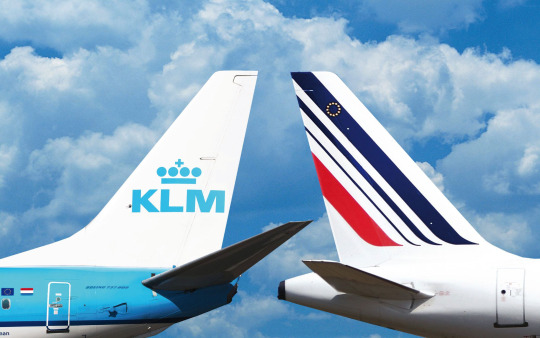
Well, sort of, yes. The merger between Air France and KLM is actually quite similar to the LAN-TAM merger in the sense that it's officially a merger but it's quite clear who's absorbing who. The merged company which became LATAM, despite taking a new name (combining LAN and TAM to make the admittedly clever LATAM) kept LAN's CEO, membership in oneworld rather than Star Alliance, and airport slots. It's 60% owned by Banco de Chile. It also keeps LAN's use of literally identical liveries for its branches instead of just mostly identical ones. All of the airlines which are part of LATAM are still operating as if nothing happened despite the fact that, in the sense of branding and identity, they just don't exist anymore.
But KLM obviously exists. In fact, KLM is an upcoming post! Because what LATAM is doing is pretty unusual!
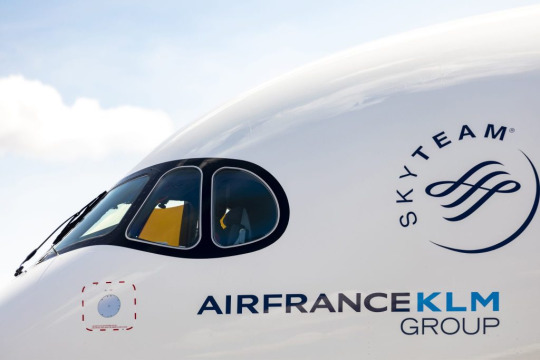
Lufthansa owns Brussels Airlines, Austrian Airlines, and whatever the flag carrier of Switzerland is. The same company owns British Airways and Iberia. None of those brands have been retired. Is it because it would cause massive backlash and thus lose money? I mean, probably, but that's never stopped companies from doing anything. I wouldn't be surprised if it were written into merger agreements in all honesty. When Davey Neeleman and his investie acquired custody of TAP it was on the condition they keep their base in Lisbon. I wouldn't be surprised if Lufthansa's contract included "let Belgium keep its flag carrier, even if it's owned by a German company".
It is almost aggressively normal for one massive conglomerate to own multiple seemingly unrelated brands. Everyone knows the thing about Mars owning every major candy at this point. But that isn't the same thing. That's like if every Mars-owned candy was branded as CANDY YOU CAN BUY IN AMERICA. Not even HERSHEY'S BAR YOU CAN BUY IN AMERICA. Just CANDY YOU CAN BUY IN AMERICA.
It's not TAM, a member of the LATAM Group. It's not LAN Perú. It's LATAM.
Perhaps the strange legacy of Brazilian flag carriers contributes to this fate. Perhaps those of other countries would be less willing to go along with it. You might think that. But the answer is far more gruesome: this is normalized in Latin America.
Avianca is an old, tenured airline with its own history. The Avianca Group is the second-largest airline holding group in Latin America and unfortunately does the exact same thing, being the death knell to flag carriers: El Salvador's TACA (which occupies a similar nominal-partner status as the former TAM), Costa Rica's LACSA, and Guatemala's Aviateca (which I would call a flag carrier by process of elimination, much like TAM), which had fallen to TACA before its absorption.
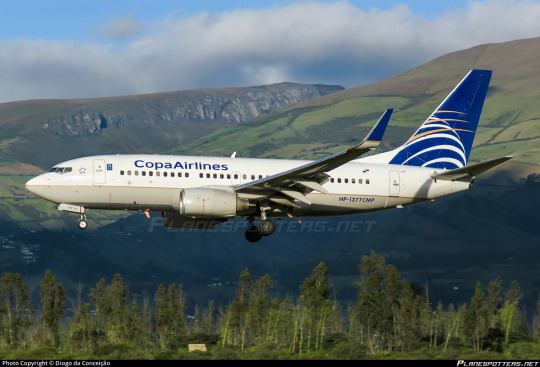
Believe it or not, Copa, which doesn't even have its own livery, is one of the largest bastions of brand identity freedom still clinging to life. Other competitively large flag carriers still operating in Latin America include Argentina's Aerolíneas Argentinas; Bolivia's Boliviana de Aviación; Cuba's Cubana de Aviación; and Mexico's Aeroméxico; though smaller flag carriers are scattered throughout it seems like basically the entirety of what could be called LATAM is now part of either LATAM or Avianca.
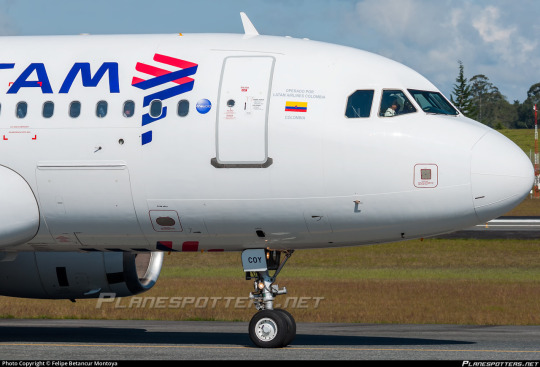
The only way to tell LATAM planes' airline of origin is by looking at the flag near the front and/or the registration, if you happen to know the registration codes for its member countries off the dome.
LATAM operates across six (formerly nine, including a cargo branch in Mexico) countries. It is the dominant airline in Chile, Ecuador, Paraguay, and Perú, and is the largest international airline in Brazil. Its branch in Colombia is outshone by Avianca, but that doesn't really matter, not to me. What matters is that five countries have no flag carrier, and isn't that weird and unnerving and sort of...bad?
This is a very baseless silly claim that means nothing, but it feels like LATAM (and Avianca, sort of) are trying to be the flag carrier of Latin America. And that's a terrible, worrying thing, given that this is an entire region of the world full of diverse countries which should have their own carrier, even if they're part of a larger international holding company. It's normal for airlines to purchase stakes or even majorities in other airlines when they're struggling financially, but it's almost the opposite of this. When Delta offered to buy a stake in JAL it felt like it was almost with the intent to preserve the JAL brand, and this is the norm. There's a reason we still have Brussels Airlines and Austrian Airlines and [whatever your guess on the questionnaire was] instead of Lufthansa Belgium, Lufthansa Austria, and Lufthansa Switzerland. Even Lufthansa gets to claim superiority over LATAM.
So when I discuss the Star Alliance Test, I am talking about something incredibly silly. It's already a little absurd when talking about carriers that are actually members of Star Alliance, and becomes moreso when talking about ones that aren't. But if I happen to discuss a carrier in Latin America, saying "I think it would be a mercy to their livery to be absorbed into LATAM" is possible. It's terrifying. The LATAM test is scarier than even the SmartLynx test by nature of what it represents.
...but is the livery bad, though?
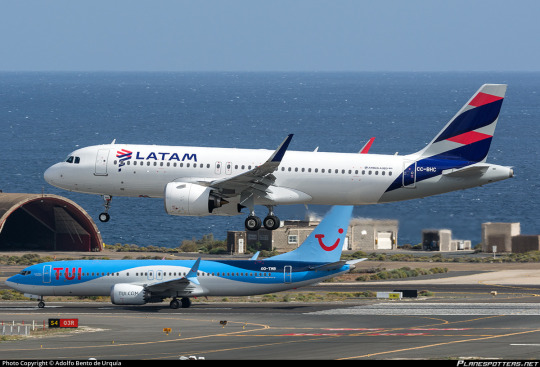
Yes it is!
To be clear, philosophically speaking LATAM deserves an F. This livery should not exist because of what it does to other carriers. But I'll be rating it neutrally of that, much like the alliance liveries. This is the point of my blog.

This was introduced in 2015, which really seems to be the turning point from detached tail to minimally-attached tail. Sure, it was one of the earliest adopters of this, but that doesn't make me respect the bare minimum much more. It has the same problem nearly every implementation of this does, where it looks totally adequate on shorter planes but hilariously bad on longer ones.
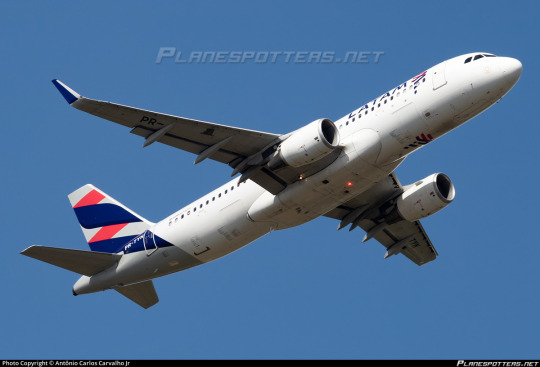
This livery in particular is begging for an extension because of this really pretty ribbon-wrapping effect. Why does everything just cut off abruptly at the same point? Why doesn't more of the grey bleed to the main fuselage? Why doesn't that nice blue ribbon keep going? Literally what is stopping you other than convention? Why is the entire underside white except for that tiny little logo, located weirdly high and small where nobody will ever see it?

LATAM has this fantastic color scheme, a beautiful combination of fuchsia and midnight blue which looks stunning on the light cool grey they've chosen for the tail. And they blew it all on a tail-only livery with a mainly white body. They didn't even put it on the nacelles. I'm very exhausted.

The entire livery is centered around this logo. It's approximately the shape of South America and admittedly very nice-looking. I like that the logo almost looks like a descender while the wordmark is above the windowline, but these sorts of little details are absolutely nothing when your plane is a big long white tube with a nice-looking tail transplanted on from a better livery.
LATAM's livery gets a D+.
And this is what we've lost so much to get. LAM, TAN, AIRES, SAETA...we are nearing a dark future where airports across Latin America are just lines of white planes, a thin line carved out by pretty tails cut off before their time.
#tarmac fashion week#grade: d+#grade: c#grade: c+#era: 2000s#era: 2010s#era: 2020s#latam airlines#lan airlines#aires#tam transportes aéreos#lapsa air paraguay#lineas aéreas paraguayas#region: latin america#region: brazil#region: colombia#region: chile#region: peru#region: paraguay#region: ecuador#copa airlines#long haul#compilations#lufthansa line
24 notes
·
View notes
Text
Excerpt from this story from the Chicago Tribune:
Reid Thompson, a fourth-generation farmer in central Illinois, is in the middle of planting season. Weather permitting, he tends to the fields in the morning, walks home for lunch with his wife and newborn, and then returns to his tractor until sundown. He’ll harvest his corn in early fall, sell it to a nearby ethanol plant, and eventually it will make its way to a car’s gas tank. That’s the routine, at least for now.
Nearly all U.S. gasoline contains ethanol to reduce emissions, and nearly all of that ethanol is made from corn starch. But, electric and hybrid vehicles offer even further emissions reductions. This poses a threat to corn demand that could be devastating for a state such as Illinois, the second-largest corn producer in the country.
The resulting decline in the value of Midwestern farmland and corn prices will hurt farmers and have ripple effects across rural communities, predict University of Nebraska at Lincoln agricultural economists Jeffrey Stokes and Jim Jansen. Rural businesses that cater to the agriculture sector could go under, property taxes that fund local schools will likely plummet and farmers could be forced to default on debts to community lenders, the economists forecast. This would come after farmers have been hit by a series of misfortunes over the last five years: the pandemic, trade wars, inflation and excess supply.
Corn could be the key to solving another clean energy dilemma, though. Unlike cars and trucks, planes are difficult to electrify, and some fuel companies believe the answer to cleaning up aviation lies in America’s heartland.
“(Corn is) the cheapest, most sustainable, most scalable feedstock (raw material),” said Patrick Gruber, CEO of Gevo, one of the companies with plans to turn corn ethanol into aviation fuel.
Thompson and other corn farmers are eager to seize this opportunity in sustainable aviation fuel, another term for jet fuel made without fossil fuels.
But, before corn ethanol-to-jet fuel can be a viable alternative to conventional jet fuel, the emissions associated with corn ethanol production must come down. This will require farmers to change their practices on the field and ethanol plants to implement controversial technologies like carbon sequestration.
Since 2005, the federal government has required transportation fuels to be blended with increasing amounts of renewable fuels such as corn ethanol to reduce air pollution, greenhouse gas emissions and dependence on foreign oil. The mandate transformed rural economies across the Midwest. Between 2008 and 2016, corn prices rose by 30%, and 26% more land was converted to cropland than would have been otherwise, according to a 2022 study published by the National Academy of Sciences.
Ethanol plants quickly sprang up around corn fields, due largely to investments from farmers eager for the new market to succeed.
The Biden administration established a “Grand Challenge” to produce 3 billion gallons of sustainable aviation fuel — defined as jet fuel with 50% less emissions than conventional jet fuel — annually by 2030. The ultimate goal is to make enough of this fuel to meet all national demand — estimated to be 35 billion gallons — by 2050.
Airlines are on board. United and Delta have both signed advance purchase agreements with numerous aspiring sustainable aviation fuel producers. Currently, however, sustainable fuel only accounts for 0.1% of the jet fuel used by major U.S. airlines, according to the latest federal government data.
The challenge is that creating sustainable aviation fuel costs three to five times more than conventional jet fuel and securing biomasses at scale is challenging. Most of the 24.5 million gallons produced last year were created with discarded cooking oil and animal fat, which are available in limited quantities.
3 notes
·
View notes
Text
What Makes Aviator Game Development So Popular in 2024?

Introduction
Aviation has always been a source of fascination, and in the realm of gaming, aviator games are reaching new heights of popularity in 2024. Whether you're navigating a fighter jet through intense aerial combat or piloting a commercial airliner with precision, these games offer an exhilarating experience that resonates deeply with gamers worldwide.
Immersive Gameplay Aviator
Aviator games excel in providing immersive gameplay that puts players in the pilot's seat. Titles like the "Ace Combat" series and "Microsoft Flight Simulator" are celebrated for their realistic controls and physics, allowing players to feel the adrenaline of high-speed maneuvers and the challenge of navigating through various weather conditions.
Realism and Simulation Aviator Game
The hallmark of aviator games lies in their ability to realistically simulate flight experiences. Advanced graphics engines and physics simulations recreate the intricacies of different aircraft types and environmental factors. Games like "X-Plane" immerse players in dynamic weather systems and realistic day-night cycles, enhancing the authenticity of the flying experience.
Innovation in Aviator Game Design
Developers continually innovate to deliver fresh and engaging experiences in aviator games. "Star Wars: Squadrons" merges aerial combat with the beloved Star Wars universe, while "Flight Simulator 2020" sets new standards with real-time weather and AI-generated landscapes based on real-world data.
Technological Advancements and Community and Multiplayer Engagement
Technological advancements continue to drive innovation in aviator game development. Virtual reality (VR) enhances immersion by placing players directly in the cockpit, while augmented reality (AR) overlays digital information onto the real world, transforming how players interact with their surroundings.
Multiplayer features foster community engagement in aviator games, enabling players to collaborate on missions or compete in aerial races. Online forums and social platforms amplify the sense of community, where players share tips, discuss updates, and organize virtual events, enriching the overall gaming experience.
Business Benefits of Aviator Game Development:
Revenue Generation: Aviator games can generate significant revenue through game sales, in-game purchases, and subscriptions. Popular titles attract a large player base, leading to sustainable income streams for developers and publishers.
Brand Recognition: Developing successful aviator games enhances a company's reputation and brand recognition within the gaming industry. Positive reviews, awards, and community engagement contribute to building a strong brand presence.
Diversification of Portfolio: For game development studios and publishers, aviator games provide an opportunity to diversify their portfolio. This diversification reduces reliance on specific genres or franchises, mitigating financial risks associated with market fluctuations.
Technological Innovation: Aviator game development drives technological innovation, pushing the boundaries of graphics, physics simulations, and immersive gameplay. Innovations made in aviator games often influence advancements in other gaming genres and industries.
Long-Term Engagement: Successful aviator games foster long-term player engagement through regular updates, downloadable content (DLC), and community-driven events. This ongoing engagement builds a dedicated player base and extends the game's lifecycle.
Partnerships and Collaborations: Developing aviator games can lead to strategic partnerships and collaborations with aircraft manufacturers, aviation organizations, and entertainment companies. These partnerships enhance authenticity, expand marketing reach, and open new revenue opportunities.
Global Market Reach: Aviator games appeal to a global audience of gamers and aviation enthusiasts. Localizing the game for different regions and platforms increases market reach and maximizes revenue potential in international markets.
Influence on Industry Trends: Successful aviator games set industry standards and influence trends in game design, technology adoption, and player expectations. This influence strengthens a company's position as a leader in interactive entertainment.
Developing aviator games not only offers exciting gameplay experiences but also presents lucrative opportunities for revenue growth, brand building, and technological innovation within the gaming industry.
Future Trends
Looking ahead, several trends are set to shape the future landscape of aviator game development beyond 2024. Advances in artificial intelligence (AI) are poised to introduce more sophisticated non-player characters (NPCs), enhancing the realism and unpredictability of in-game interactions. Players can expect NPCs to exhibit more lifelike behaviors and responses, making each gameplay experience unique and dynamic.
Additionally, procedural generation techniques are anticipated to revolutionize game world creation. Developers can harness these tools to generate vast and diverse environments efficiently, offering players endless opportunities for exploration and discovery. From sprawling cityscapes to remote wilderness, procedural generation will enable aviator games to deliver expansive and immersive virtual worlds that evolve dynamically.
Furthermore, the integration of blockchain technology holds promise for transforming ownership and trading of virtual assets within aviator games. This innovation could empower players with true ownership of in-game items and aircraft, facilitating a robust digital economy where virtual assets hold tangible value. Blockchain's decentralized nature also promises enhanced security and transparency, fostering trust among players and developers alike.
Cross-platform compatibility and the rise of cloud gaming services are also expected to redefine accessibility and connectivity in aviator games. Players will enjoy seamless access to their favorite titles across multiple devices, while cloud-based infrastructure ensures smooth gameplay experiences with minimal latency. These advancements will democratize access to aviator games, attracting a broader audience and fostering a more interconnected gaming community.
As aviator game developers continue to embrace these trends and innovations, the future promises exciting possibilities for the genre. Whether exploring new frontiers in AI, harnessing the potential of blockchain technology, or expanding virtual horizons through procedural generation, aviator games are poised to captivate players with their limitless creativity and immersive experiences in the skies of tomorrow.
Conclusion
In conclusion, the enduring popularity of aviator game development in 2024 stems from its immersive gameplay, realism, innovation, broad appeal, technological advancements, community engagement, and anticipation of future trends. As these games evolve with technology and player expectations, they continue to captivate audiences with their realism, creativity, and sense of exploration. By embracing new technologies and community-driven content, aviator games are poised to remain at the forefront of interactive entertainment, offering players thrilling experiences and limitless possibilities in the virtual skies.
#aviator#video games#philippines#netherlands#germany#portugal#spain#brazil#russia#italy#france#turkey
2 notes
·
View notes
Note
K, L & N please!!!
it's almost a shame you picked N and not M - KLM is the royal Dutch airline lol
K: Do you have a guilty pleasures in fic (reading or writing)?
I'm not sure about guilty pleasures but I NEED a happy ending. I can deal with drama and angst and heartbreak as long as everything is all sunshine and rainbows at the end. And I LIVE for meddling parents/siblings/friends and outsider/third person POV fics.
L: Which of your fanfics was the most emotionally challenging to write?
PS I love you. I usually avoid/ignore Gwyn's death (and I will be doing the same with Gabriel, thank you very much) but this worked really well with the prompt "Letter". I just cannot deal with Major Character Death fics in general, but dead parents/grief heavy fics are a big no for me. I'm happy with how it turned out but I probably won't be writing anything like that again!
N: Any fic ideas brewing that you’d care to share?
Oh man - so many! I'm hoping to finish my pride fic soon, there is my TK and Marjan exploring Austin fic that was inspired by TK's diamond earring
and also these (mostly just ~vibes~ for now)
- K9 handler/reluctant social media star Carlos
- wrong person/right time blind date
- photographer!TK going all Humans of New York Austin and getting Carlos in front of his lens (inspired by this screencap from the pilot I saw ages ago that had cameras on the shelves in TK's apartment)
- Owen's bff/TK's godfather from New York visiting (outsider POV)
- Owen and TK getting interviewed for local news as the new father and son duo working to reopen firehouse 126, and Carlos being there too to update the public on a missing person's case
- a kind of missing moments thing of TK "officially" meeting Gabriel and Andrea. The show went from the farmer's market to dinner party at casa tarlos and that always felt a bit rushed.
- Carlos and Gwyn bonding while TK recovers after being shot. In Bad Call, when Carlos shows up at Owen's house looking for TK, he still calls Owen Captain Strand but calls Gwyn by her first name, so in my mind he's closer to her/knows her better/is less intimidated by her. I have this image in my head of them having long conversations late at night when TK is asleep on Carlos' bicep and he can't/won't move because TK needs rest, and she isn't quite as scary when the only light source is the tv.
And my RWRB different first meeting fic that I shared a little snippet of earlier (and was supposed to be posted 4 months ago - never let me run a challenge again, me and deadlines is a bad combo)
5 notes
·
View notes
Text

[Image Generated using DALL - E]
Reflecting on the case and the marketing strategies of Corona and Heineken reveals a tale of two varied approaches, each with its unique implications in the competitive landscape of the beer market.
As I read the case- I kept comparing the dynamic nature of advertising and selling beer in the US. Having grown up in India- the nature of ads from alcohol companies were very different.
My reflection highlights some of the areas where regulatory frameworks lead to innovative marketing tactics such as surrogate advertising.
Finally- I could not help but wonder what the impact of the pandemic was on a brand like Corona (for obvious reasons). I remember listening to a podcast back in the day about the ultimate positive effect the pandemic had on beer consumption in the US, and my final point covers that.
Corona and Heineken's Divergent Paths
Corona’s growth in the U.S. market, challenging Heineken's long-standing dominance, serves as an example of how brand imagery and lifestyle alignment can reshape market dynamics. While Heineken has promoted its brand as a premium quality, heritage, and sophisticated one, Corona adopted a different strategy. Its marketing campaigns evoked a sense of relaxation, escapism, and the simple pleasures of life, epitomized by the iconic image of a lime-wedged bottle on a sun-drenched beach.
The Indian Context: Surrogate Marketing
Turning to the Indian market, where direct advertising of alcoholic beverages is prohibited, brands have resorted to surrogate marketing to make their presence felt in the consumers' minds. Companies promote products that share the brand name with the alcoholic beverage, such as music CDs, water, or even airlines, thereby maintaining brand recall.
For long, some of the funniest and most memorable ads, usually came from such brands. This strategy, while requiring creativity and indirect messaging, highlights the complex interplay between regulatory environments and marketing innovation, allowing brands to build a presence in a market with strict advertising restrictions.
(Alcohol brand selling "Music CDs": https://www.youtube.com/watch?v=9zhozmQCDYg&pp=ygUdbWVuIHdpbGwgYmUgbWVuIGltcGVyaWFsIGJsdWU%3D)
Lately, many brands have launched zero-alcohol products, using these as surrogates to gain market popularity. Heineken was definitely the winner in the Indian market – from my recollection, I never saw a Corona ad.
Any publicity is good publicity? - True for Corona!
The COVID-19 pandemic presented unique challenges particularly for a brand like Corona, given the unfortunate name association. Despite initial setbacks and market confusion (with rumors rife with association to the virus), Corona's marketing strategy demonstrated resilience and adaptability. Research suggested that the brand's visibility and consumer loyalty contributed to this growth, with each new COVID-19 case seemingly boosting Corona's sales by $5.30 weekly compared to other major beer brands. The article mentioned that Corona beer gained "accidental popularity" due to its name's association with the coronavirus, driving increased attention and sales during the pandemic.
Link to article: https://www.marketplace.org/2022/12/30/how-did-the-pandemic-affect-the-corona-beer-brand/
2 notes
·
View notes
Text
Tourism Market: Trends, Growth, and Industry Players
Introduction
The global tourism market is a dynamic sector that continually evolves in response to changing consumer preferences, technological advancements, and global events. As we delve into the current landscape, it is crucial to explore the tourism market size, growth patterns, industry trends, and key players that shape the sector's trajectory.
Tourism Market Size and Growth
The tourism market has witnessed remarkable growth over the past decade. According to the latest data the global international tourist arrivals reached 1.5 billion in 2022, marking a 4% increase from the previous year. The tourism industry's robust growth is attributed to factors such as increased disposable income, improved connectivity, and a growing middle class in emerging economies.

The COVID-19 pandemic, however, significantly impacted the industry in 2020 and 2021. International tourist arrivals plummeted by 74% in 2020, representing the largest decline in the industry's history. As the world recovers from the pandemic, tourism is experiencing a resurgence. The UNWTO estimates that international tourist arrivals will surpass pre-pandemic levels by 2023, emphasizing the sector's resilience.
Tourism and Hospitality Industry Trends
The tourism and hospitality industry is undergoing transformative changes driven by technological advancements and shifting consumer behaviors. One notable trend is the rise of sustainable tourism. Travelers are increasingly prioritizing destinations and businesses that adopt eco-friendly practices. Hotels, airlines, and tour operators are responding by implementing sustainable initiatives to meet the demands of environmentally conscious travelers.
Another trend shaping the industry is the integration of technology. From mobile apps for seamless bookings to virtual reality experiences, technology is enhancing the overall travel experience. The use of artificial intelligence and big data analytics is also becoming prevalent, enabling businesses to personalize services, predict consumer preferences, and optimize operations.
Tourism Industry Players
The tourism market is comprised of a diverse range of players, including governments, international organizations, tour operators, airlines, hotels, and online travel agencies (OTAs). Notable industry players such as Airbnb, Expedia, and Booking. com have disrupted traditional hospitality models, offering travelers a wide array of accommodation options and personalized experiences.
Governments play a crucial role in shaping the tourism landscape through policies, infrastructure development, and destination marketing. Collaborations between public and private sectors are essential to foster sustainable growth and address challenges such as over-tourism and environmental impact.

Tourism Market Analysis
A comprehensive analysis of the tourism market involves assessing key factors such as market dynamics, competitive landscape, and regulatory environments. The Asia-Pacific region has emerged as a powerhouse in the tourism sector, with countries like China, India, and Japan experiencing substantial growth. In contrast, established destinations in Europe and North America continue to attract millions of tourists annually.
The post-pandemic recovery has prompted a shift in travel preferences, with a surge in demand for domestic and outdoor experiences. Travelers are seeking off-the-beaten-path destinations, contributing to the diversification of the tourism market.
Travel and Tourism Industry Outlook
Looking ahead, the outlook for the travel and tourism industry is optimistic. The industry is expected to rebound strongly, driven by pent-up demand, increased vaccination rates, and the easing of travel restrictions. The global tourism market is projected to reach $11.38 trillion by 2027, growing at a CAGR of 6.1% from 2020 to 2027.
In conclusion, the tourism market is a vibrant and resilient sector that continues to adapt to changing circumstances. Understanding the market size, growth trends, industry players, and emerging dynamics is crucial for stakeholders navigating the evolving landscape. As the world reopens for travel, the industry's ability to innovate and embrace sustainable practices will play a pivotal role in shaping its future success.
#market research#business#ken research#market analysis#market report#market research report#travel and tourism sector#travel and tourism market#travel and tourism industry#tourism sector#tourism market trends#tourism market size#tourism market players#tourism market forecast
2 notes
·
View notes
Text
Pump It Up
Quick. Name a social media platform that has been outlawed in numerous states. Now name a social media platform that is doing everything it can to promote its ubiquity. If you answered “TikTok” to both challenges, you would be right.
Never before in the short history of social media has one platform been so singled out as TikTok. As of April, 34 out of 50 states have banned its use among state employees. Montana has gone so far as to ban it completely for anyone and everyone, so please don’t think of visiting the Treasure State and posting your reels. You may just be fined.
Of course, Montana is going to face huge legal challenges on this one. And never mind that you could probably dodge their bullet by using a VPN on your phone. It’s little different from dealing with the Chinese firewall.
ICYMI, the controversy is over the fact that TikTok is owned by ByteDance, a Chinese company with rumored ties to the Communist Party there. That’s code for saying TikTok may be a national security risk, even if you’re just posting reels of your dog doing tricks.
To combat this, ByteDance will more than gladly take on legal challenges, as well as bolster its presence everywhere, like at the gas pump. Remember when we were told not to use our phones while fueling because we night cause an explosion? Yeah. Apparently that’s a non-starter these days, because TikTok has partnered with GSTV (Gas Station TV) to launch new videos we can watch during the five minutes we’re left checking our email and socials anyway. QR codes and a call to action seek to bring viewers into not just TikTok, but the brands paying to advertise there.

And it is pure genius, security risks or not. I bet the other social media platforms are kicking themselves for not jumping on this one. Think about it. When else do we all have a short amount of dead time that could otherwise be used for marketing purposes? This is the kind of thinking from the old days (meaning before COVID) that airlines followed with their in-flight magazines, as well as SKyMall catalogs. Those days were even better, because they had captive audiences locked into their seats for sometimes hours at a time.
The GSTV ads are 20 seconds, even shorter than the reels we see on TikTok. GSTV claims 116 million unique viewers each month, which speaks to the appeal of their platform. The ability to share these adverts makes them worth even more, because they can now reach even more eyeballs.
The strategy is nothing new for TikTok, which has also inked deals with Reach TV for airports, and Screenvision inside movie theatres. The goal is to be even more ubiquitous than Facebook, Google, or any of the other major ad-supported platforms.
Now let’s think about some applications. While virtually anything could be promoted at the pump, including simply planting seeds for products that might be purchased much later, I see great potential for items that could be sold in the next few minutes. Imagine the fast food joint next door promoting a meal deal, or a nearby bar advertising its Happy Hour.
Think about it. You’re already out in your car, and you use it to convey a quick and easy purchase, which may or may not have been planned. In some cases, it could divert you; in others, it could be a speed bump that interrupts whatever it is you are doing.
The major limitation to this method—which is good but not perfect—is that we do not purchase gasoline on a daily basis, unless you happen to drive 300-400 miles a day. Travelers along the freeway are one thing, but locals are probably not going to hit the gas station more than once a week, and maybe even less, depending upon the daily commute.
Still, I commend TikTok for finding new ways to spread its wings, because given the current state of affairs at the state and federal level, they should be nervous—and they are. While I hate the notion of a US firewall blocking selected sites, it is a possibility. It would be unprecedented—and I promised never to use that word after the pandemic and all its unprecedentedness—but stranger things have happened.
Meanwhile, fill ‘er up and look for these screens at the pump. They’re calling your name.
Dr “Sell Me Something Good” Gerlich
Audio Blog
8 notes
·
View notes
Text
Project #5 - R+D: Written Synthesis & Mood Board

(Revised Post)
Continental Air began operating in July 1934 as part of Varney Speedlines. It later changed its name to "Continental" to reflect its CEO's vision of expanding across the US. The airline offered airmail and passenger services using several aircraft models. Over time, it merged with multiple commercial airlines and became the largest airline in the US in 1987. However, financial struggles caused by debt and multiple bankruptcies led to a decrease in flight routes, reduced seating capacity, and employee layoffs. Continental eventually merged with United Airlines in 2012. The company's marketing objectives, after launching a campaign to enhance its reputation, included four main areas: market, finance, product, and people. To strengthen its presence in cities such as Newark, Houston, and Cleveland, Continental targeted businesspeople. It eliminated unprofitable flights, improved customer experience, and laid off employees to address financial issues. With a focus on expanding its reach and providing excellent services, Continental aimed to train employees for long-term careers, increasing revenue and transforming the corporate culture.
Continental's main competitors include other US airlines like Air Canada, American, Lufthansa, Emirates, and Delta. Greyhound, Amtrak, and cars also pose competition. Innovative technologies like Zoom and Teams have reduced business travel. Previously, the airline targeted frequent business travelers by offering luxury amenities like an on-plane pub and lounge. They also provided snacks, meal options, and drinks that were not available on competitor airlines. The airline later expanded its services to include affordable flights to popular family-centered destinations.
Continental Airlines is often viewed as providing basic or cheap services, which is a contrast to its previous patriotic image. The name "Continental" is associated with a basic and inexpensive breakfast, further reinforcing this perception. Balancing flight costs with rates and delivering quality services is a significant challenge for the airline, which can undermine its image and drive away its target audience and clientele. Continental Airlines prioritizes affordable air travel with exceptional service. Passengers enjoy free meals, customized for each flight's destination, and amenities like headphones and blankets. The airline offers satellite-based Wi-Fi on international flights and charging ports for every seat.
Continental Airlines rebranded several times. In the 1930s-40s, it was patriotic; the 1960s-70s saw a corporate shift; the 1970s-90s had a playful, friendly look. The company's "Must-Haves" include timely and efficient travel, cost-friendly fares, exceptional customer service, attractive branding, and a positive team environment. To avoid undesirable flights, they maintain an efficient daily flight schedule, avoid over-scheduling to a single destination, and promote a cohesive brand identity.
2 notes
·
View notes
Text
Seamless Connections: Travel CRM with API Integration
Introduction:
Travel agents must adapt quickly to changing consumer needs and market trends if they want to stay in business. Travel CRM with Application Programming Interface (API) integration has emerged as a solution that empowers agencies to streamline their operations, personalize client experiences, and stay at the forefront of the digital transformation.
The Power of Integration For Travel Industry : Travel CRM with API:
Effective Data Transfer:
The Travel CRM can easily exchange data with other external systems, including airline and hotel booking systems, thanks to API connection.
Real-time data updates minimize human mistake and challenging data entry.
Personalization:
CRM systems enriched with API data can provide personalized recommendations and offers to clients.
Clients feel more valued when offered tailored travel options.
Multi-Channel Communication:
API integration allows travel businesses to communicate with customers through multiple channels, such as email, SMS, and social media.
This multi-channel approach enhances client engagement and marketing outreach.
Inventory Management:
API integration with booking systems ensures accurate and up-to-date inventory management.
Travel agencies can provide real-time availability and pricing information to clients.

Travel CRM with API Integration: Practical Applications:
Client Data Enrichment:
API integration enhances client profiles with data from external sources, offering a comprehensive view of client preferences and behavior.
Agencies can provide highly personalized recommendations and services.
Booking and Reservations:
Travel agencies can instantly access real-time availability and pricing data through API integration.
This facilitates efficient booking and reservation processes.
Marketing and Communication:
Integration with email and SMS APIs allows for targeted marketing campaigns.
Agencies can reach clients with relevant travel offers and updates.
To Be Conclude:
The integration of Travel CRM with API opens new doors for travel agencies to provide enhanced customer experiences, streamline operations, and remain competitive in a fast-paced industry. These two blogs illustrate how IVR and API integration offer solutions that transform the way travel agencies connect with clients and manage their operations, ultimately leading to increased efficiency and customer satisfaction.
#crm company#crm development#b2b travel software#travel crm with api#ivr solution#ivr with travel crm
2 notes
·
View notes
Text
What sets Konnect Insights apart from other data orchestration and analysis tools available in the market for improving customer experiences in the aviation industry?
I can highlight some general factors that may set Konnect Insights apart from other data orchestration and analysis tools available in the market for improving customer experiences in the aviation industry. Keep in mind that the competitive landscape and product offerings may have evolved since my last knowledge update. Here are some potential differentiators:

Aviation Industry Expertise: Konnect Insights may offer specialized features and expertise tailored to the unique needs and challenges of the aviation industry, including airports, airlines, and related businesses.
Multi-Channel Data Integration: Konnect Insights may excel in its ability to integrate data from a wide range of sources, including social media, online platforms, offline locations within airports, and more. This comprehensive data collection can provide a holistic view of the customer journey.
Real-Time Monitoring: The platform may provide real-time monitoring and alerting capabilities, allowing airports to respond swiftly to emerging issues or trends and enhance customer satisfaction.
Customization: Konnect Insights may offer extensive customization options, allowing airports to tailor the solution to their specific needs, adapt to unique workflows, and focus on the most relevant KPIs.
Actionable Insights: The platform may be designed to provide actionable insights and recommendations, guiding airports on concrete steps to improve the customer experience and operational efficiency.
Competitor Benchmarking: Konnect Insights may offer benchmarking capabilities that allow airports to compare their performance to industry peers or competitors, helping them identify areas for differentiation.
Security and Compliance: Given the sensitive nature of data in the aviation industry, Konnect Insights may include robust security features and compliance measures to ensure data protection and adherence to industry regulations.
Scalability: The platform may be designed to scale effectively to accommodate the data needs of large and busy airports, ensuring it can handle high volumes of data and interactions.
Customer Support and Training: Konnect Insights may offer strong customer support, training, and consulting services to help airports maximize the value of the platform and implement best practices for customer experience improvement.
Integration Capabilities: It may provide seamless integration with existing airport systems, such as CRM, ERP, and database systems, to ensure data interoperability and process efficiency.
Historical Analysis: The platform may enable airports to conduct historical analysis to track the impact of improvements and initiatives over time, helping measure progress and refine strategies.
User-Friendly Interface: Konnect Insights may prioritize a user-friendly and intuitive interface, making it accessible to a wide range of airport staff without requiring extensive technical expertise.

It's important for airports and organizations in the aviation industry to thoroughly evaluate their specific needs and conduct a comparative analysis of available solutions to determine which one aligns best with their goals and requirements. Additionally, staying updated with the latest developments and customer feedback regarding Konnect Insights and other similar tools can provide valuable insights when making a decision.
#DataOrchestration#DataManagement#DataOps#DataIntegration#DataEngineering#DataPipeline#DataAutomation#DataWorkflow#ETL (Extract#Transform#Load)#DataIntegrationPlatform#BigData#CloudComputing#Analytics#DataScience#AI (Artificial Intelligence)#MachineLearning#IoT (Internet of Things)#DataGovernance#DataQuality#DataSecurity
2 notes
·
View notes
Text
Indian Government's Focus on Expanding Regional Connectivity Expected to Boost Aviation industry Jobs?
The Indian aviation industry has been witnessing unprecedented growth in recent years, with the Indian government focusing on expanding regional connectivity by launching new airports and routes across the country. This move is expected to have a significant impact on the aviation industry in India, leading to the creation of new job opportunities in aviation management.
The expansion of regional connectivity is a game-changer in the Indian aviation industry. It is not only creating new opportunities for airlines but also for individuals who want to build a career in aviation management. With the development of new airports and the launch of new routes, there is a growing need for aviation management professionals with Degrees like a BBA in Aviation Management, MBA in Aviation Management, and Airport Management who can oversee the planning, development, and operations of these facilities. The roles in aviation management include airport manager, air traffic controller, ground operations manager, and aviation consultant, among others.
The expansion is also expected to create an environment of competition in the aviation industry. With the launch of new routes and airports, airlines are competing for market share, leading to an increase in demand for skilled and knowledgeable aviation management professionals. This could result in higher salaries and better benefits for those working in the field, as companies compete to attract and retain top talent.
Moreover, the expansion of regional connectivity is not just limited to new job opportunities in aviation management but has also led to a boost in tourism and economic growth in the regions where new airports and routes have been launched. The availability of air connectivity to remote and underdeveloped regions of India is providing a much-needed boost to the local economies, creating new opportunities for businesses and entrepreneurs.
However, the expansion of regional connectivity comes with its own set of challenges, such as the need for significant investment in infrastructure and technology, and the development of new approaches to airport security and air traffic management. But these challenges also present opportunities for innovation and process improvement, which can further enhance the efficiency and effectiveness of the aviation industry in India.
The expansion of regional connectivity in India is a positive development that is creating new job opportunities in aviation management, boosting tourism and economic growth, and driving innovation in the aviation industry. As the Indian aviation industry continues to grow, there will be ample opportunities for skilled and knowledgeable professionals to make meaningful contributions to this exciting and dynamic field. If this does not convince you to be part of the Aviation Management Industry, Please call us we will lead you to the careers of Tomorrow.
Source URL: https://www.ilamindia.in/blogs/indian-government's-focus-on-expanding-regional-connectivity-expected-to-boost-aviation-industry-jobs.php
2 notes
·
View notes
Text
Pluto Enters Aquarius
Pluto is entering Aquarius on March 23, 2023 and will remain there until March 8, 2043. When Pluto changes signs, it’s a big deal because it only happens every 12 to 30 years! We can expect some huge changes while the planet of transformation visits Aquarius.

Pluto can be a dark planet. It rules over death, transformation, renewal and taboos. When Pluto was discovered, it was named for the Roman god of the underworld. When this mysterious planet changes signs there is a huge cosmic shift.
March 23, 2023 - Pluto enters Aquarius
June 11, 2023 - Pluto Retrograde enters Capricorn
January 20, 2024 - Pluto enters Aquarius
September 1, 2024 - Pluto Retrograde enters Capricorn
November 19, 2024 - Pluto enters Aquarius
March 8, 2043 - Pluto enters Pisces
August 31, 2043 - Pluto Retrograde enters Aquarius
January 19, 2044 - Pluto enters Pisces
Why are there so many dates involved? Pluto is slow-moving and with retrograde activity, it only advances so far per year, depending on the sign. Pluto spends anywhere from 11.5 to 30.5 years in a single sign and is in retrograde half of the year. While Pluto is trying to enter Aquarius in 2023, it won’t be consistently there until late 2024. We’re truly getting a preview of what this transit has to offer.
Since 2008, Pluto has been in Capricorn, the sign of government, structure and the practical. As you might have noticed on the dates above, Pluto will be retrograding back to Capricorn as early as June.
Aquarius is concerned with thought, intellect and reasoning as well as how we communicate information. Aquarius is the sign of progress, community and the collective. There is a unique rebellious vibe present with this sign.
The shift of bringing about transformation in the practical to bringing it about with progress will be sure to have an effect on all of us.
How could this Pluto in Aquarius transit affect us as a whole?
During this long transit, we may see some beliefs that were long held turned on their head. Aquarius challenges the status quo. It’s a time to seek change and overhaul in society through the mind. With Pluto in Aquarius, we take social structures and policies seriously. We seek major reform in those areas. There will be a transformation of rules and social norms.
Worldwide changes in technology, science and space travel wouldn’t be surprising while Pluto is in Aquarius, since Aquarius rules technology, including television and the internet. The internet is a communication that could become more powerful. It can create a place for deeper secrets, criminal operations, black market, drug dealing and human trafficking. There are risks of powerful cyberwar with powerful hackers. We must figure out where our ingenuity, creativity and humanity fit into our increasingly automated world.
We may see major realization about our phones, computers and things that sync, update, download, or feature like and follow buttons. We should expect to see the conflict between people and the technology they use, dissolutions in the industry, and power struggles between government and big tech. Government institutions will create a stricter regulatory device to protect against or eliminate online corruption. More surveillance of everyday life is to be expected.
Many jobs could become replaced by technology, which could hurt the labor market. Libraries, medical care, pharmacy, banking and travel are just a few things that could become completely digitized. Humans will likely make artificial intelligence advances.
Aquarius sees the big picture and has a bird’s eye. We might see a much-needed change in airline travel. We’re moving into a new era of space travel. This could mean space’s long-term effects on the human body being studied. We’ve also heard a lot about aliens lately, so it wouldn’t be surprising if we saw even more about extraterrestrials during this transit. Aquarius is open to the unknown.
Back to Earth, we could learn new information about disease and treatment.
We will see a shift in civil rights and humanitarianism. Pluto in Aquarius is bound to be a revolutionary time. Only good things can come from taking action to make movements, whether the change is slight or major. We can hope that we will see as many of us as possible for the ideal of equality and community and working together to build a better, fairer society.
Pluto exposes and unearths things, like secrets and lies. During Pluto in Capricorn, we saw uncovering of government corruption and secrets thanks to data leaks, special interest groups and brave whistleblowers. With Pluto in Aquarius we might see secrets of big tech companies being exposed.
It’s interesting that in the US we’re looking at banning drag in some states. Society deems gender expression and queerness as a taboo subject. The truth about queer people is being skewed by conservatives with their own agendas. Secrets could be revealed with the authenticity that is reflected where the LGTBTQ+ community is honest, and those who are conservative are distorting their image.
We’re likely to confront issues of control and power related to individuality, equality, friendships and group associations. Unusual, intense or dramatic things may happen with friends or networks. On a higher level, we are destined to see a huge transformation in how we communicate with strangers, such as internet culture, and group identities. We could see a revolution of the working class.
Collective upheaval is rarely comfortable, but it reminds us of the resilience and power of our communities.

What can we expect in our personal lives?
Pluto teaches us that life is an unstoppable force and growth can emerge from the dark night of the soul. This planet gives us lots of time to absorb its profound lessons. When you start to work with this planet, you will feel in tune with your innermost self. It asks you to trust the voice inside.
It’s not possible to fully predict what humanity will look like during and after this transit. While some things may be out of your control, it’s important to stay grounded and present. It's very important to check in with your body and instincts.
Gather your networks, your fellow activists and group chat as changes unfold. Have people to connect with and lean on. Give back to communities. If you’re unsure of how to help, check your local online communities. Do your research before joining in on some mass movement. Use common sense and trust your gut.
Pluto can bring transformation, evolution and revelation. This can be the death of something in your life and the birth of something completely new, or bringing forward something that is long hidden. If you think back to a time in your life of irreversible change, it’s likely that Pluto was active in your chart.
Look out for being more intense than usual. Pluto is deep, dark and mysterious. You may find intensity in unique areas of your life, in your friendships and networks or even in love. Pluto in Aquarius may lead to erratic behavior, thinking and emotions.
Weird secrets might come forward. You might have weirder sex. Pluto draws us to the things that are deemed ‘taboo’, and sex is something we aren’t always comfortable talking about. Aquarius can make us feel like thinking outside the box in the bedroom. Be cautious though, because this is when our darker desires could surface.
Pluto in Capricorn reveals the truth about the societal structures that we live in, and this structure will die. We can look at this from a bigger picture and see activism make this happen on a large scale, yes. You can also look at your life. It is our responsibility to create a new world from our heart’s content - create art and music, invent, innovate and use personal healing powers. Create your own personal world with your heart’s desire by building a family or community from the ground up. Be responsible for yourself and your true desires without basing it on societal expectations. Explore your subconscious fears, blocks and shadows especially surrounding power, change, group dynamics and letting go. Imagine a life of freedom and collective fairness and watch it manifest in real time.
Authenticity might be a theme that comes forth in your life. Being your true self doesn’t always mean aligning with what society sees as ‘normal’. Thinking the way you don’t normally can lead to ideas and thoughts that can transform your life in a positive way.
4 notes
·
View notes
Text
The last days of 2022 had some good news for women
The U.S. Senate passed two acts that help working moms who are pregnant or breastfeeding. The Pregnant Workers Fairness Act and the Providing Urgent Maternal Protections for Nursing Mothers Act (known as the PUMP Act) were added to the 2023 omnibus spending bill, which now passed the Senate and is headed for a House vote.
The PUMP Act
The PUMP Act for nursing mothers requires organizations to provide time and space for breastfeeding parents. The Affordable Care Act of 2010 already requires that employers provide reasonable time to express breast milk and provide a place for pumping, other than the bathroom, that is shielded from view and private.
But the previous pumping law excluded most salaried employees, and the PUMP Act will extend these rights to all breastfeeding employees for the first year of the baby’s life. In addition, the new bill states, “Further, time spent to express breast milk must be considered hours worked if the employee is also working.”
According to the Surgeon General, breastfeeding can help protect babies from illnesses like ear infections, diarrhea and pneumonia and longer-term conditions such as obesity and asthma. It also lowers mothers’ risk of breast and ovarian cancer. Three out of four mothers in the U.S. start breastfeeding at birth, but only 13% of babies are exclusively breastfed by the end of six months.
One study in the journal Pediatricsestimates that if 90% of U.S. families breastfed for six months, the U.S. would save $13 billion from reduced medical and other costs and prevent over 900 infant deaths. In addition, individual families would save up to $1500 per year in infant formula costs.
The complications involved with pumping at work may contribute to women’s decision to stop breastfeeding. Nearly half of moms have expressed concern that breastfeeding at work could impact their career growth, according to a survey by a breast pump maker. And almost half of these women have considered a job change because of their desire to pump at work. A whopping 62% said there is a stigma attached to moms who breastfeed at work, indicating that workplaces still have much room for improvement.
Even when an organization wants to help women pump, individual managers can make expressing milk at work challenging. In her book Bully Market, Jamie Fiore Higgins describes her experience working at Goldman Sachs after her children were born. “Goldman had a lactation center, an entire floor with hospital-grade pumps, private lockers, a full-size kitchen and lactation consultants available 24/7,” she writes. But when her boss noticed Fiore had signed up for the lactation rooms, he allegedly told her that she needed to be at her desk working, not pumping, if she wanted to be promoted to managing director.
The PUMP Act garnered bipartisan support with some pushback from the airline industry. Given the small space on board flights, airlines had legitimate concerns about finding private areas for breastfeeding employees. The current bill made accommodations for the airline and rail industry and was amended to include a hardship exemption for small businesses. The PUMP Act was approved in a 92-5 Senate vote, with Republican Senators Rand Paul, John Cornyn, Mike Lee, Ron Johnson and Patrick Toomey voting against it.
Pregnant Workers Fairness Act
The second bill which helps mothers is the Pregnant Workers Fairness Act which requires employers to provide reasonable accommodations for medical conditions related to pregnancy and childbirth. While this bill also had bilateral support, the Senate voted to include it in the spending bill with a vote of 73 to 24. The law states that employers can’t deny employment opportunities based on these pregnancy accommodations, and they can’t “require employees to take paid or unpaid leave if another reasonable accommodation can be provided.”
“If a woman requests a stool to sit on or bathroom breaks, or a water bottle, even accommodations that are that simple, that basic and the subject of so much consensus — employers don’t have to provide those right now,” Senator Bob Casey said in an interviewafter the vote.
Although the bill has widespread bipartisan support, not everyone was in favor. Some felt the bill could force employers to make accommodations for abortions. Senator Thom Tillis told the Senate, “the legislation would subject pro-life organizations to potentially crippling lawsuits if they refuse to facilitate abortions in direct violation of their religious beliefs and their moral convictions.”
Tillis’ comments came after the U.S. Conference of Catholic Bishops (USCCB) had endorsed the bill and after the law had been revised to clarify that no employer would have to subsidize “any particular item, procedure or treatment.”
James Rogers, a spokesperson for the USCCB said the bill “helps advance USCCB’s goal of ensuring that no woman ever feels forced to choose between her future and the life of her child.”
This vital act comes at a time when one in five mothers is afraid to tell their employer about their pregnancy. And nearly one in four mothers (23%) have considered leaving their jobs due to a lack of reasonable pregnancy accommodations or fear of discrimination, according to a Morning Consult survey conducted in February 2022.
Working women should be able to choose to procreate and take steps to raise healthy children without jeopardizing their jobs. The PUMP Act and the pregnancy bill are steps in the right direction.
By
Kim ElsesserFollow
I cover women’s issues at work—including the wage gap, sexual harassment and female leadership. My prior careers include developing a quantitative hedge fund for Morgan Stanley and teaching about gender at UCLA. I hold a Ph.D. in Psychology from UCLA and two graduate degrees (management and operations research) from the Massachusetts Institute of Technology (MIT), and an undergrad degree in mathematics and computer science from Vassar College. Follow me on Twitter
3 notes
·
View notes